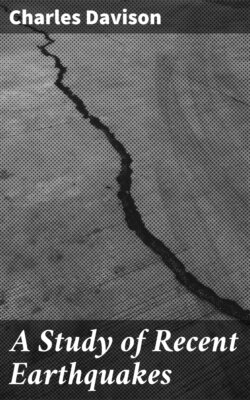Читать книгу A Study of Recent Earthquakes - Charles Davison - Страница 20
На сайте Литреса книга снята с продажи.
SOUND-PHENOMENA.
ОглавлениеMallet was one of the first seismologists to realise the significance of the earthquake-sound; and he attended closely to the subject, though finding the sound even more elusive of precise observation than the shock.
The chief result obtained by him was the comparative smallness of the area over which the sound was heard. He estimates it at little more than 3,300 square miles, or about one-twelfth of that over which the shock was felt. It extends north and south from Melfi to Lagonegro, and east and west from Monte Peloso to Duchessa and Senerchia. The sound was thus confined to the region in which the shock attained its most destructive character.
Towards the north and south ends of the sound-area all observers described the sound as a low, grating, heavy, sighing rush, lasting from twenty to sixty seconds, some adding that it was also of a rumbling nature. Near the centre and the east and west boundaries, the sound was distinctly more rumbling; it was shorter in duration, and began and ended more abruptly.
The earthquake, Mallet remarks, "began everywhere with tremors; the sounds generally arrived at the same time; the apparent direction of movement of the tremulous oscillations appeared rapidly to change, and still more rapidly to increase in amplitude; then the great shove of the destructive shock arrived, in some places rather before, in some a little after, the moment of loudest sound, and it died away suddenly (i.e., with extreme rapidity) into tremors again, but differing in direction from that of the great shock itself."[19]
The earthquake-sound will be described more fully in the chapter dealing with the Hereford earthquake of 1896, in which it will be found that the phenomena recorded by Mallet are equally characteristic of the slighter shocks felt in this country.
